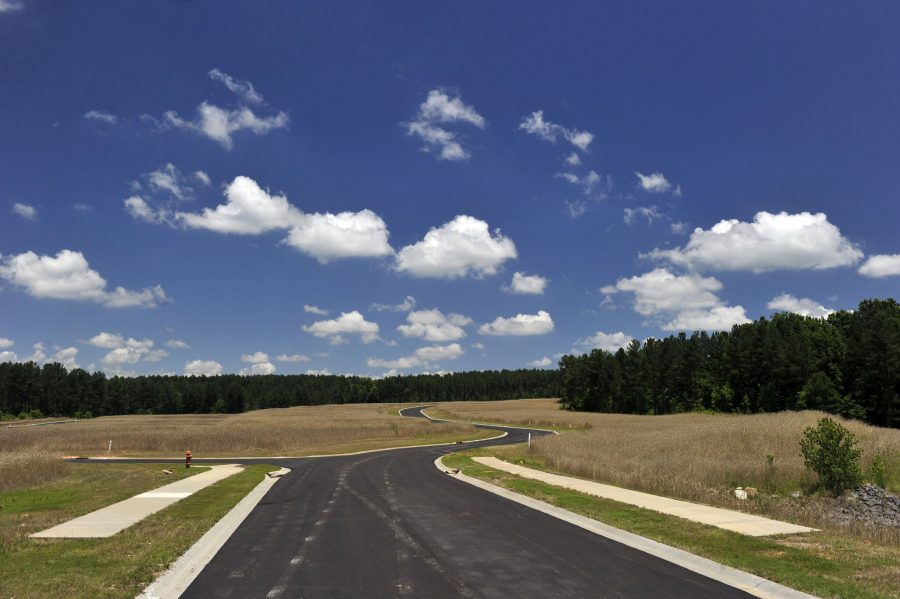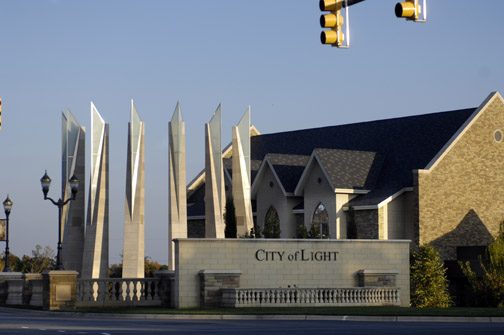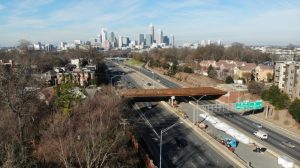Lancaster County: An Introduction

Introduction: Lancaster is a unique county within the Charlotte region, if for no other reason than its unusual geographic configuration and the corresponding diversity of economic and cultural experiences resulting from that geography. The majority of Lancaster County is situated around 45 miles from Charlotte, a distance similar to that of such outlying counties as Anson, Chester, Cleveland and Stanly, with which it shares many of the same rural characteristics and economic challenges. And yet, extending north from the rest of the county is a narrow finger of land, around 5 miles wide and known locally as “the panhandle,” which has made Lancaster a major player in one of the fastest growing and most affluent parts of the Charlotte region, the point where Mecklenburg, Union, York and Lancaster counties come together at the state line. Lancaster has been quick to capitalize on the panhandle’s growth opportunities, but as the southern end of the county continues to lag economically, the county’s leadership will likely be challenged to meet the future needs of what are quickly becoming two very different worlds.
Historical Overview: Excerpted, with permission, from the website of the South Carolina State Library. The same information can be found at http://www.statelibrary.sc.gov/lancaster-county.
“Lancaster County and its county seat of Lancaster were named for Lancaster County, Pennsylvania. The county was formed in 1785, and it was originally part of Camden District. A part of Lancaster County was removed in 1791 to form Kershaw County. Scotch-Irish settlers from Pennsylvania began moving into this upstate region in the 1750s. The Waxhaws settlement on the border with North Carolina was the birthplace of President Andrew Jackson (1767-1845). During the Revolutionary War British Lt. Col. Banastre Tarleton earned his nickname of “Bloody” Tarleton by massacring American troops in this area on May 29, 1780 at the Battle of Waxhaws; the Battle of Hanging Rock was also fought in the county later the same year. Although Lancaster County has been primarily agricultural, gold mining began there in the 1820s and textile manufacturing sprang up following the Civil War. Governor and U. S. Senator Stephen Decatur Miller (1787-1838), surgeon J. Marion Sims (1813-1883), industrialist Elliott White Springs (1896-1959), and astronaut Charles M. Duke, Jr. were all Lancaster County residents.”
Lancaster Today: Lancaster has played a prominent role in the historic narrative of the Charlotte region, from its earliest Native American inhabitants who gave the area along the North and South Carolina border its name, “the Waxhaws”, to one of the region’s most famous native sons, Andrew Jackson, who was born in a pioneer cabin somewhere in the same vicinity (the exact location of which remains a point of dispute between the two Carolinas). When the discovery of gold in Cabarrus County in 1799 sparked America’s first major gold rush and established the Charlotte region as the young nation’s center of gold production, Lancaster’s Haile Gold Mine near Kershaw featured prominently in that history. And the City of Lancaster was where one of the South’s great textile enterprises, Springs Industries, got its start with the creation of the old Lancaster Cotton Mill in 1895, helping to solidify the Charlotte region’s status as one of the centers of the southern textile industry.
Lancaster’s central role in these historic events, however, never translated into economic or cultural prominence, and over time the county found itself, like other counties in the region, in the shadow of Charlotte, which was quickly establishing itself as the region’s economic capital. Lancaster came to resemble other rural counties surrounding Mecklenburg, where agriculture and textiles fueled the local economy, and the county’s civic and cultural life centered on a few small towns like Lancaster and Kershaw. This was the status quo for nearly a hundred years, until the end of the 20th century, when the decline of the southern textile industry started to unravel Lancaster County’s economic and cultural fabric.

It was against this backdrop of uncertainty and change that the first signs of economic opportunity began to surface in Lancaster’s panhandle area near Charlotte. The success of the upscale, mixed use development of Ballantyne, near the intersection of Interstate 485 and US Highway 521 in southern Mecklenburg County, had proven the potential of Charlotte’s newly completed “Outerbelt” loop to attract new development further south toward the state line. This potential didn’t go unnoticed by Lancaster County officials, who saw an opportunity to offset some of the economic losses being experienced elsewhere in the county by encouraging growth along the U.S. 521 corridor.
While a number of residential developments have sprung up in the panhandle section, including Sun City Carolina Lakes, a major Del Webb active adult community, Lancaster officials have also worked closely with the S.C. Department of Commerce to attract new businesses to the area. In just the past two years, two significant corporate relocations from Mecklenburg County to the Indian Land area – the North American headquarters for Continental Tire and the corporate headquarters for the internet marketing company Red Ventures – have boosted the county’s economic profile considerably, while provoking discomfort across the state line as a possible sign of future defections. Lancaster and South Carolina officials have certainly made no secret of the fact that they intend to be aggressive in using tax incentives to continue attracting such high profile businesses.
As the U.S. 521 corridor continues to experience rapid growth, however, the southern part of the county struggles to keep up. Unemployment and poverty remain high in this rural part of the county, and the contrast between southern Lancaster and the northern panhandle couldn’t be greater. In fact, parts of south Lancaster more closely resemble neighboring Chester County economically than they do northern Lancaster, and this discrepancy runs the risk of becoming a major political and cultural gulf that will have to be bridged by county leaders in the future if sectionalism is to be avoided.
In studying Lancaster, one is reminded of a much-acclaimed series of reports produced back in 1986 and 2002 by the public policy research center MDC, based in Chapel Hill, N.C. Titled Shadows in the Sunbelt, these reports highlighted the growing economic disparities between the South’s more prosperous urban areas and many of its poorer rural communities. Without significant improvements in southern Lancaster’s economic prospects in the years ahead, the county runs the risk of creating its own version of what MDC found to be a common problem throughout the South. As the glow of northern Lancaster’s economic success grows even brighter in the coming years, its impact on the rest of the county could go in one of two directions – it could spark additional economic activity benefitting more communities further down U.S. 521, or it could cast an even longer shadow over a part of the county already in great need of economic renewal.
— Jeff Michael
Photos by Nancy Pierce
Lancaster County links
Lancaster County Articles & Publications







